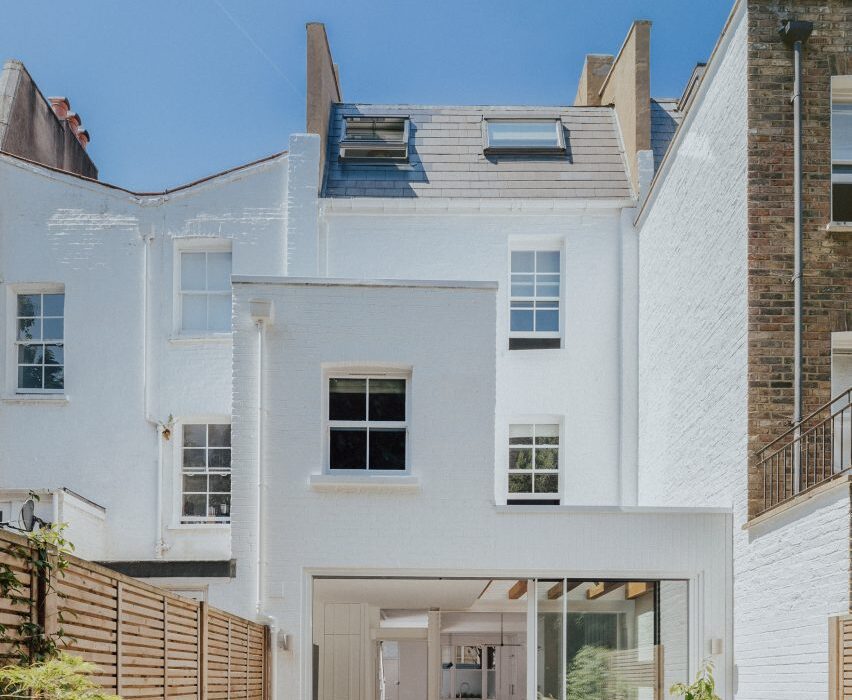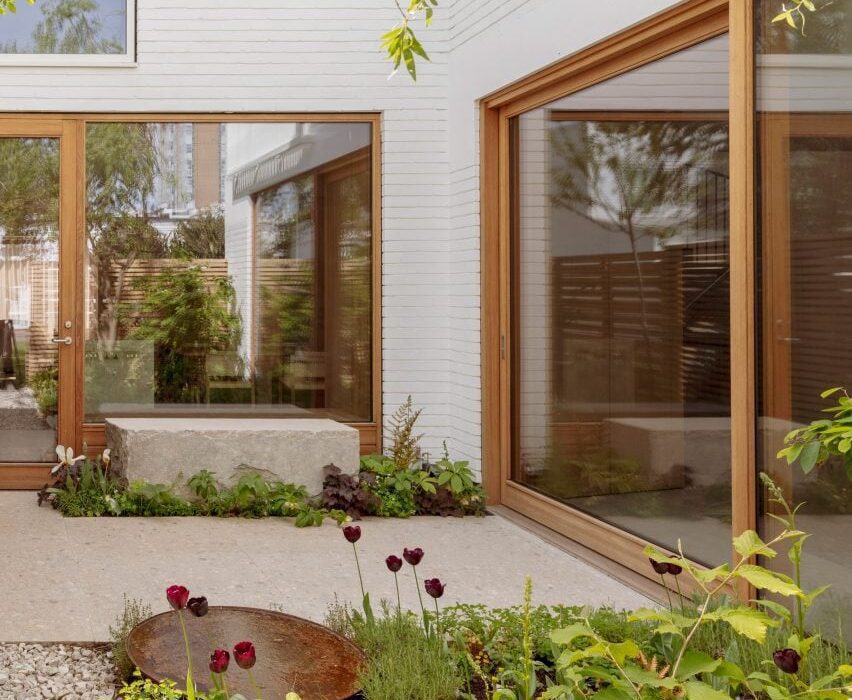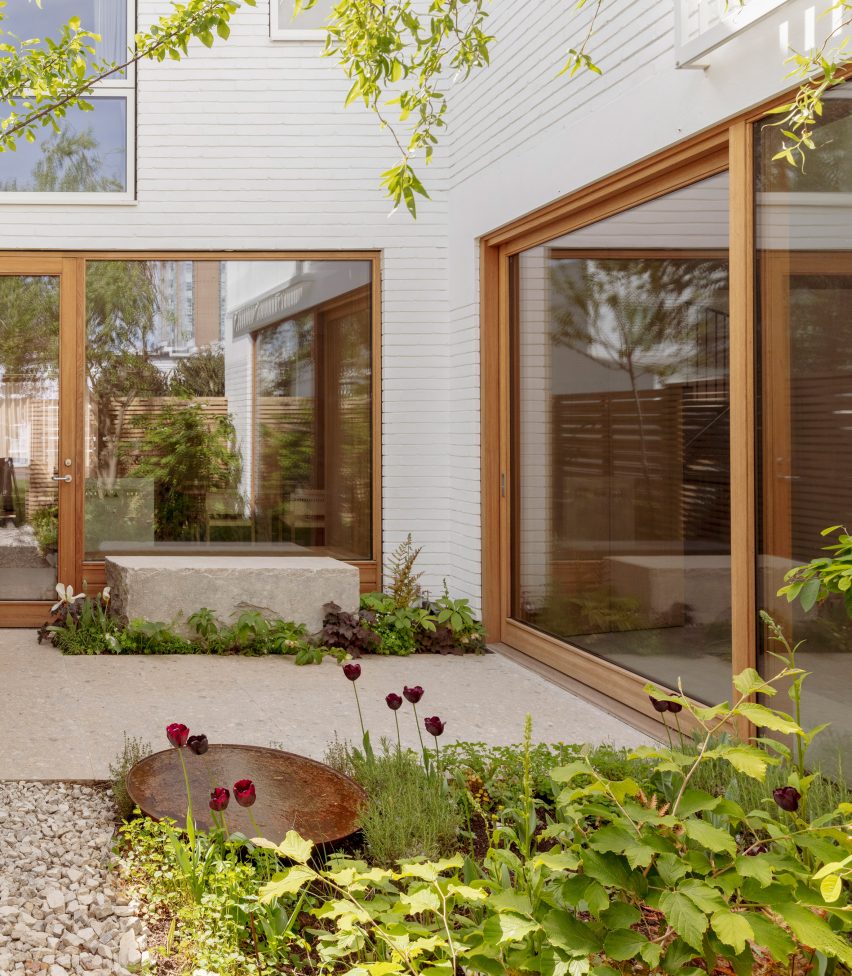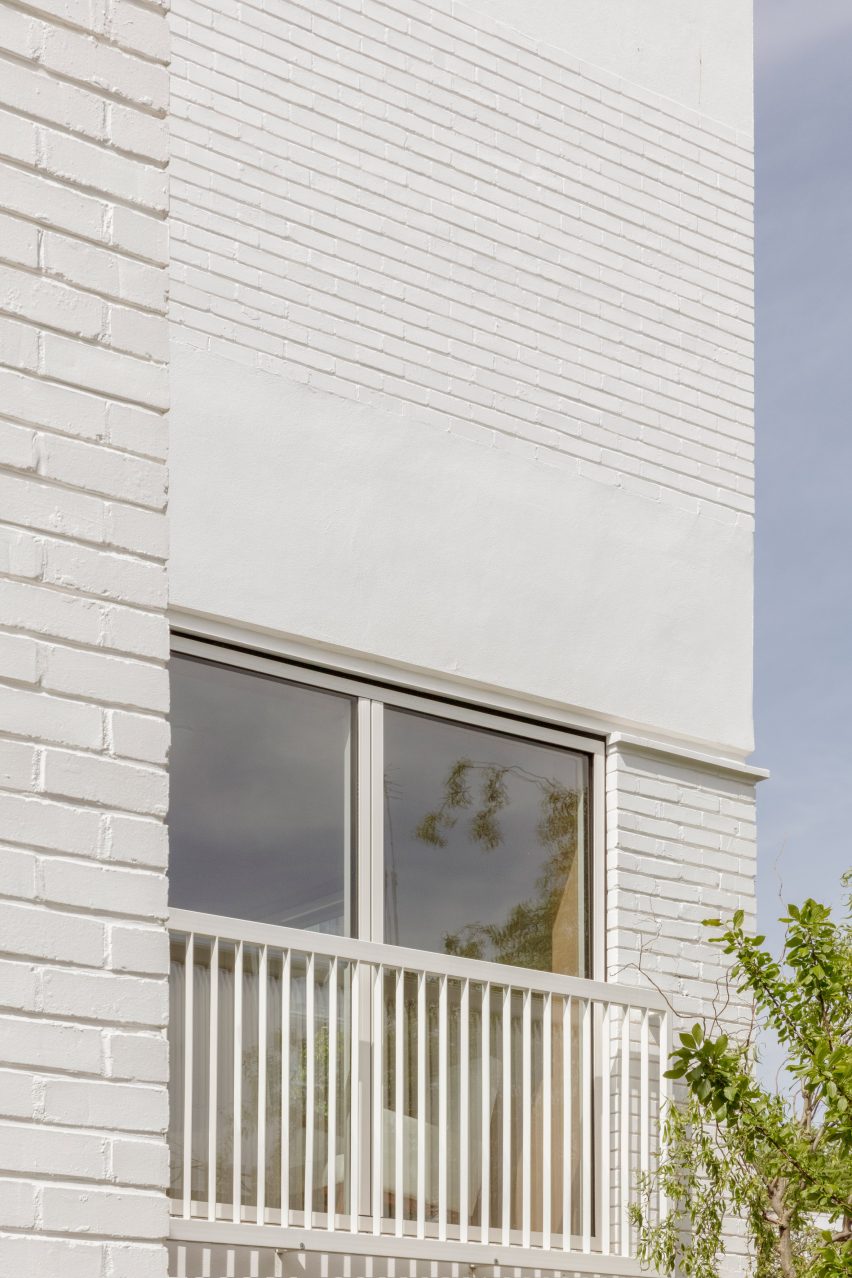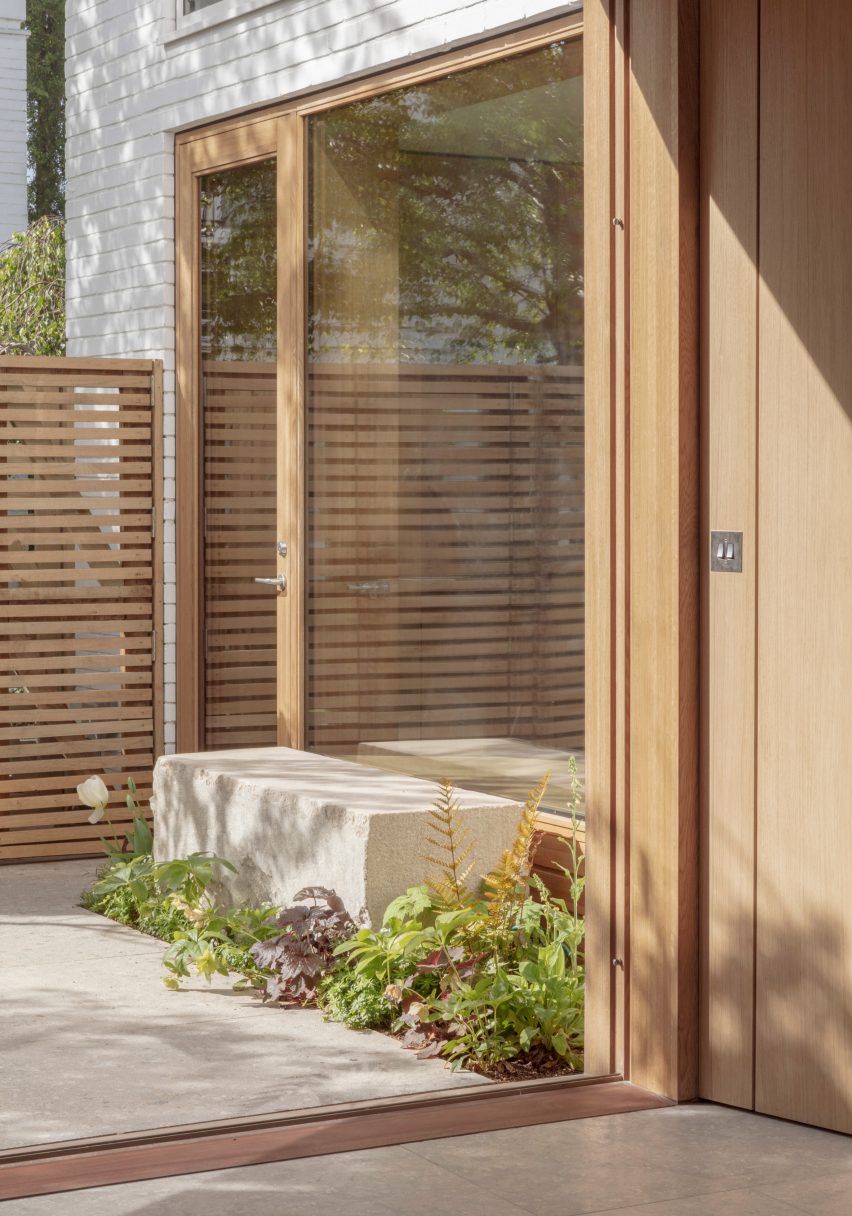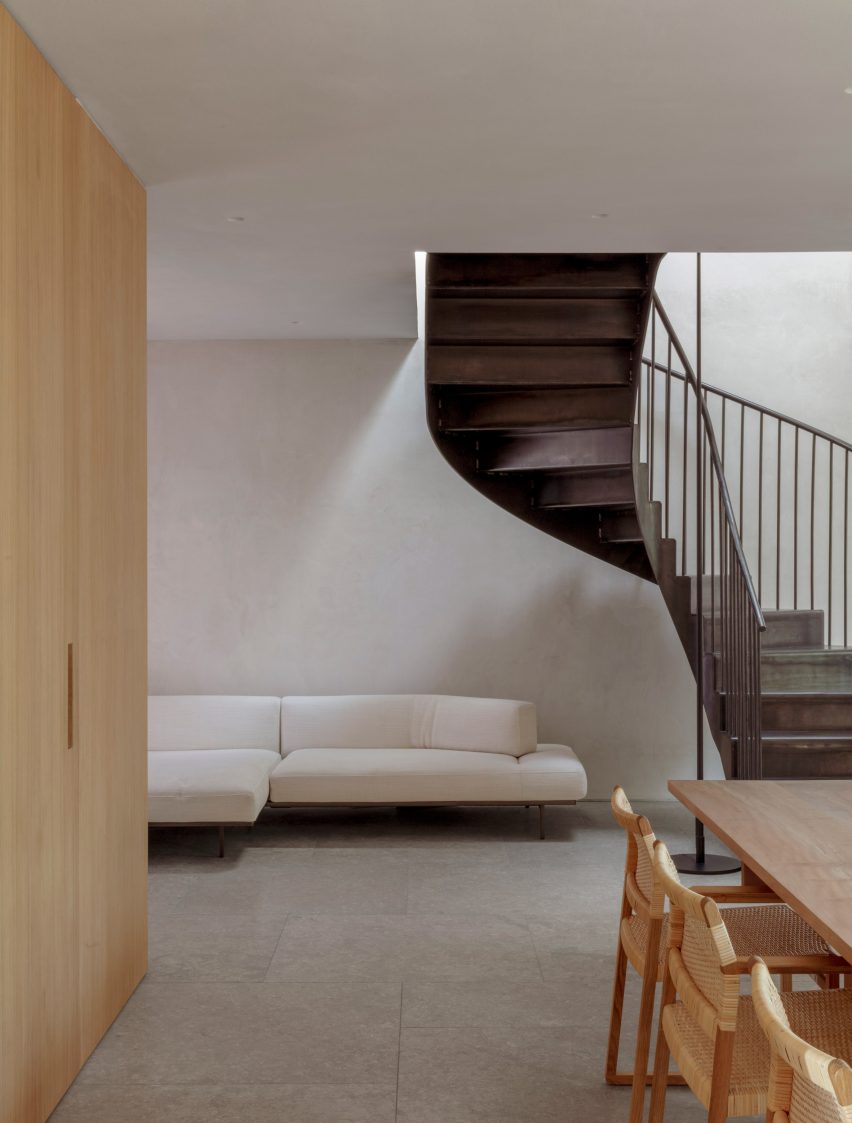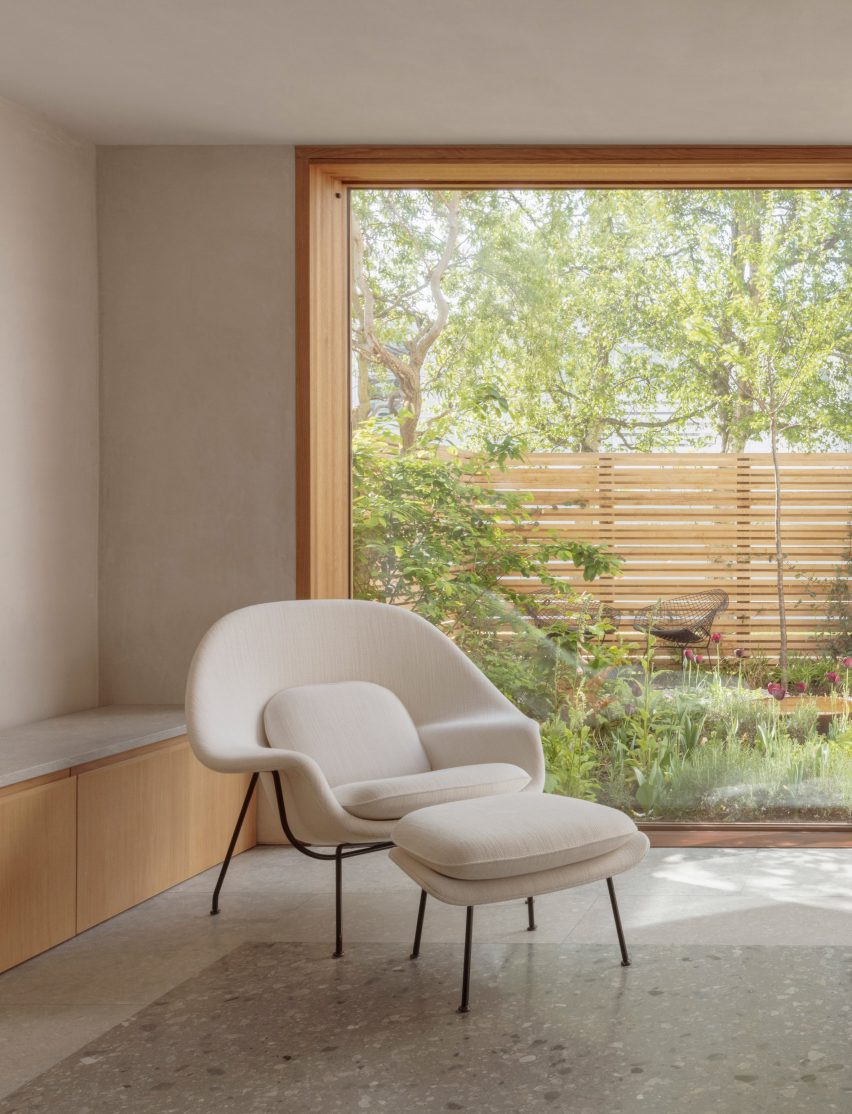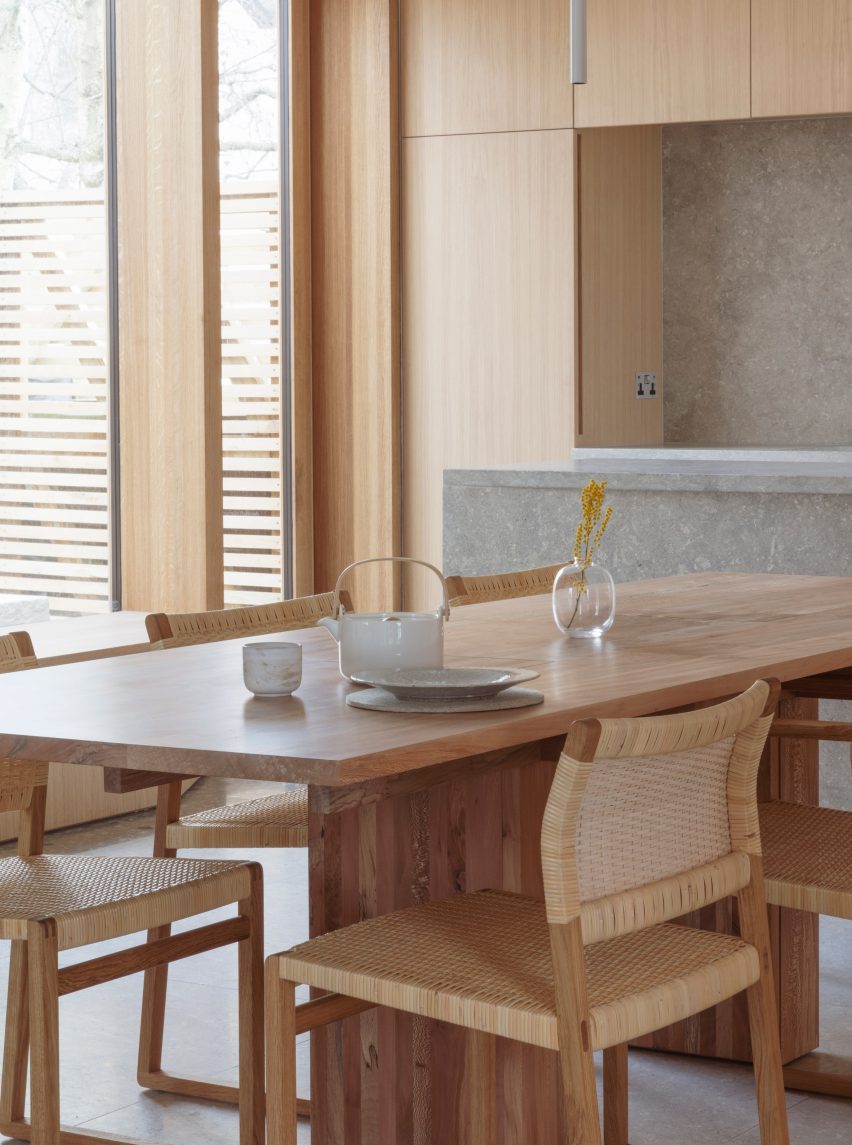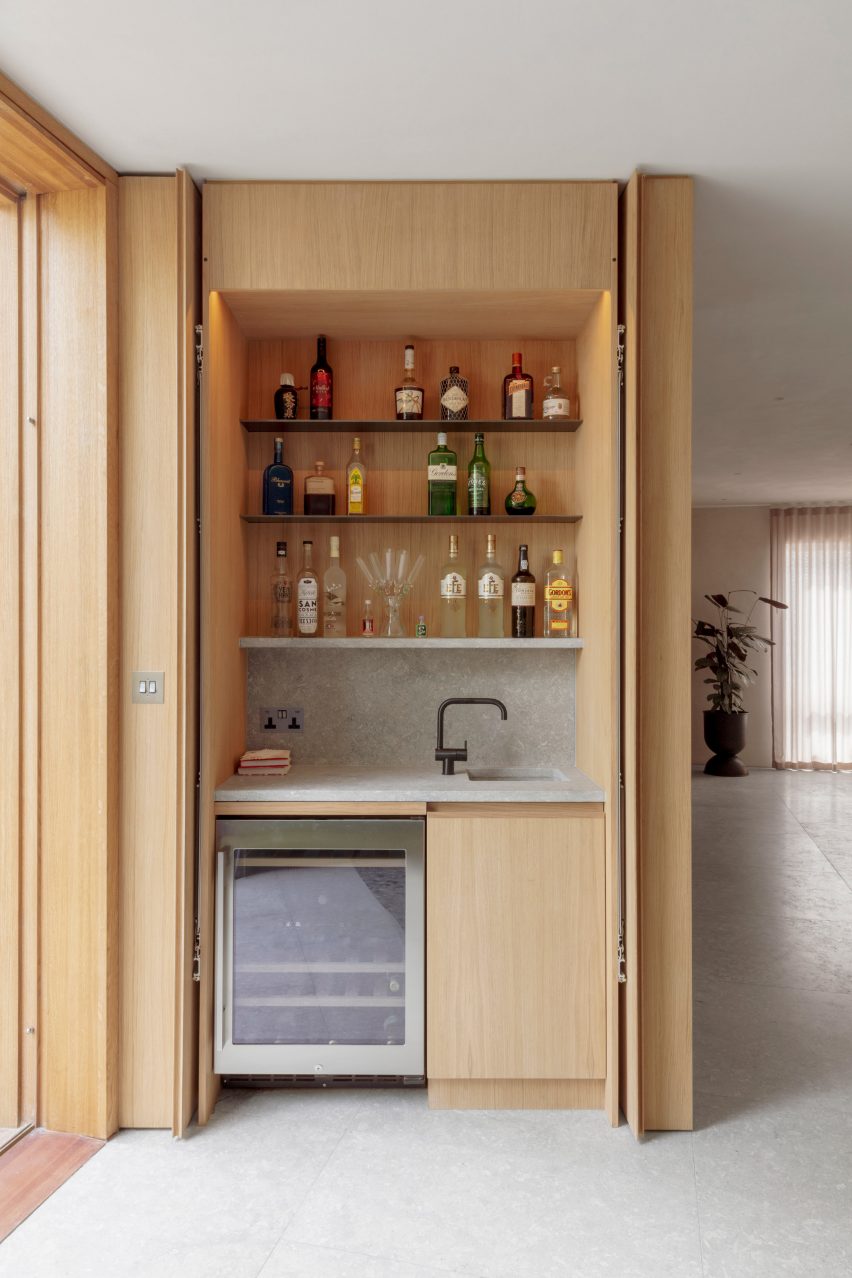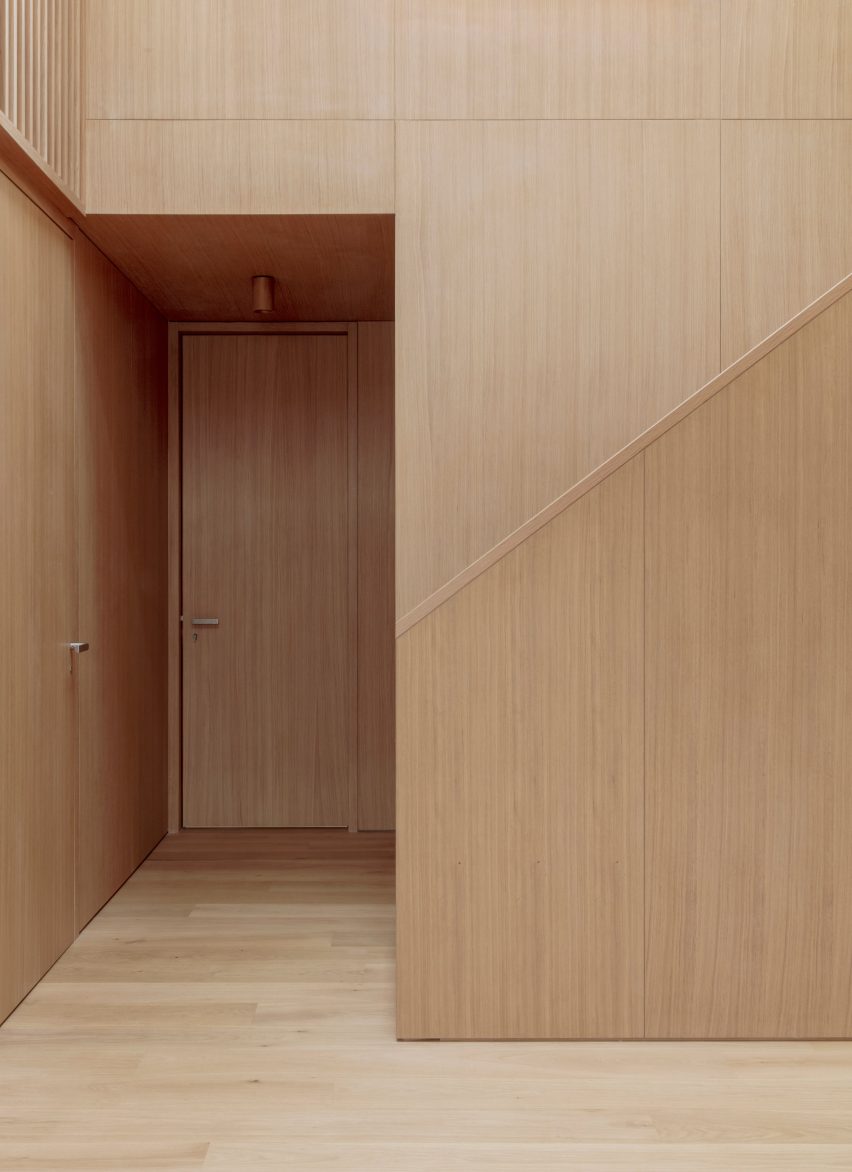Studio Varey Architects celebrates natural light in Notting Hill house
London firm Studio Varey Architects has simplified this Victorian terraced house to create a light-filled home in Notting Hill, with timber-framed skylights designed to catch the sun.
Set in the Westbourne Conservation Area, Huron House has belonged to its current owners for the last 25 years.
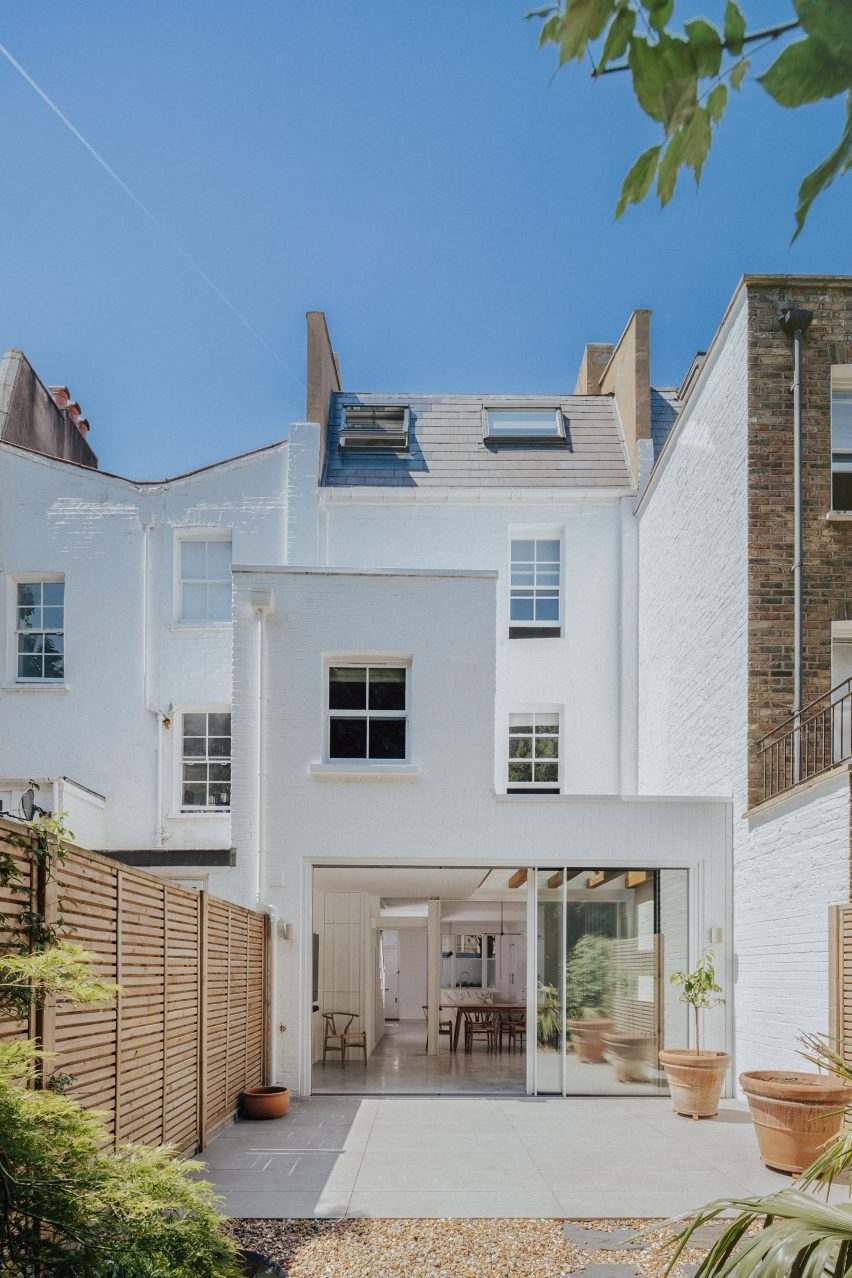
The overhaul of the 19th-century building started as a simple ground-floor renovation to replace the kitchen and improve the connection between the house and its garden.
However, exploratory works showed the four-storey property to be in bad structural condition, which demanded major improvement works but also gave the owners an opportunity to reimagine their period home.
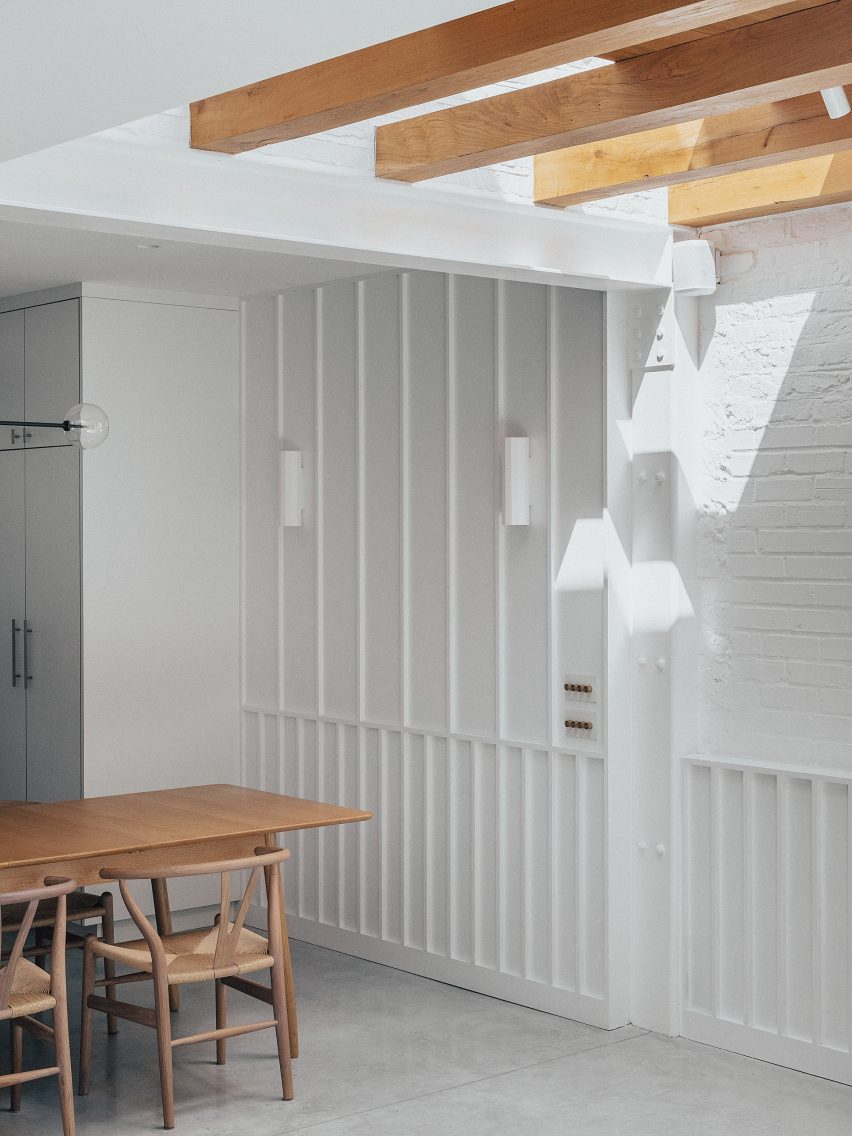
The new brief to Studio Varey Architects included a full house renovation and interior design, with special emphasis on the bathrooms as well as custom joinery and the rebuilding of the 1990s rear extension to create a new open-plan kitchen and dining room.
“Our goal was to create an open-plan living space and bring lots of natural light into the ground floor, helping it to feel more inviting and better suited to entertaining friends and family,” the studio told Dezeen.
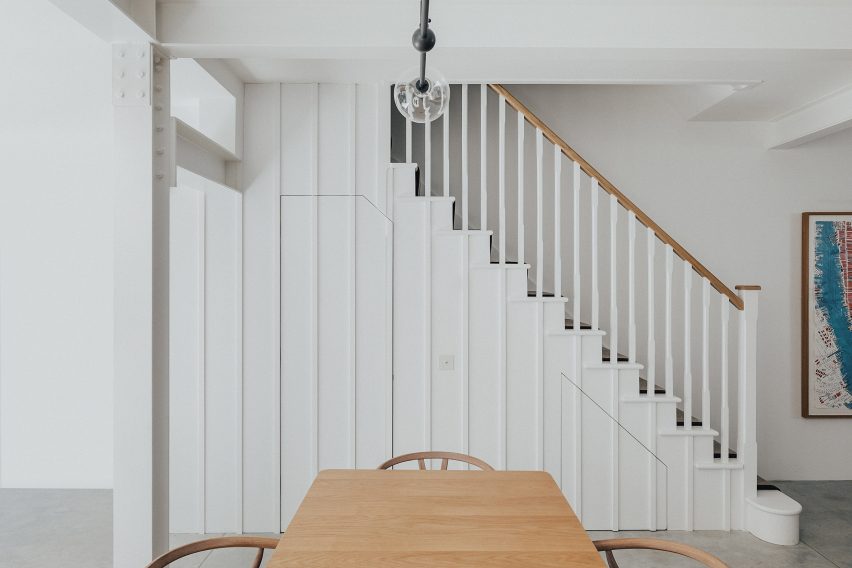
The property sits on a rough east-west axis, giving it the potential to achieve great light levels throughout the day, with the sun moving from the back of the house in the morning to the front in the afternoon.
“We wanted to ensure this natural light was captured through the architecture and design of the spaces,” the studio said.
On the ground floor, Studio Varey Architects removed a structural post that supported the building but divided the back wall.
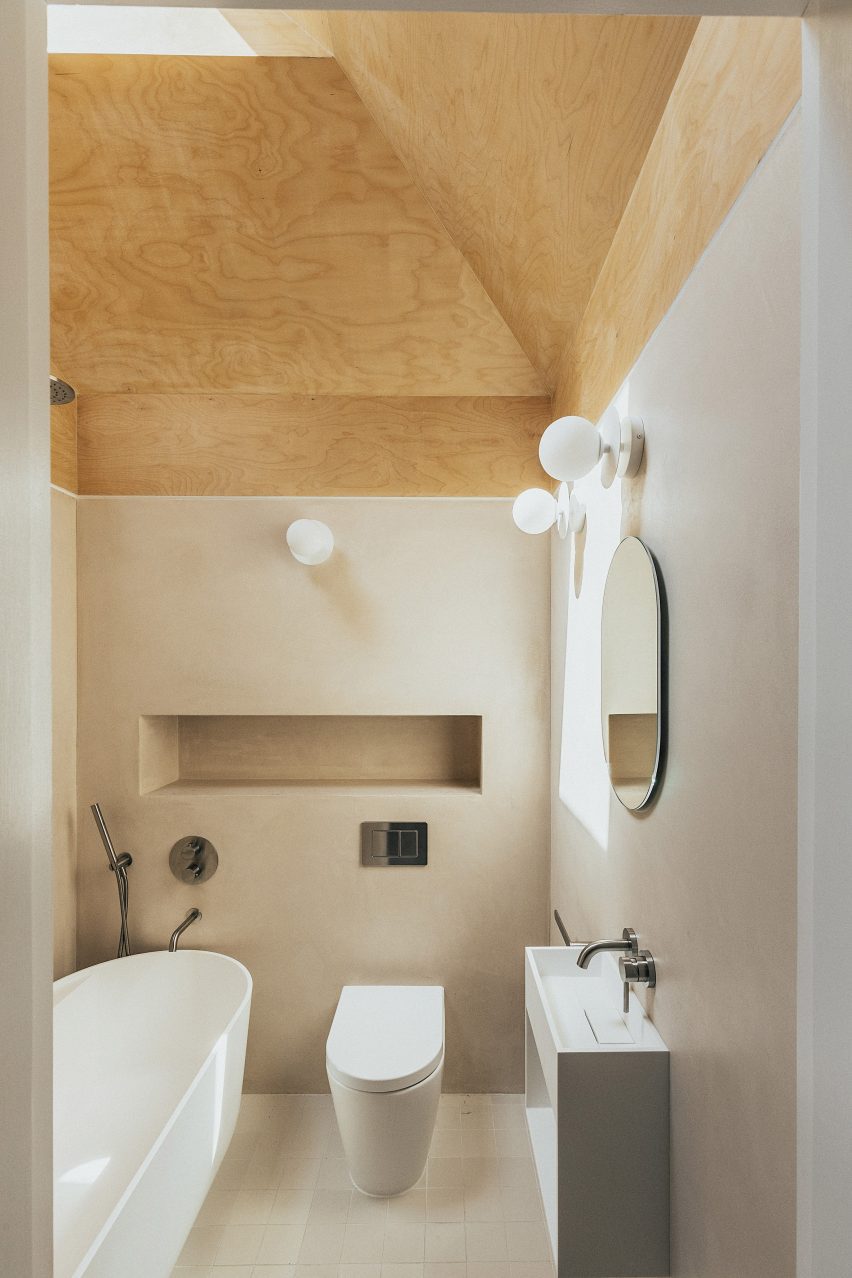
This has been replaced with a steel frame, which allowed the studio to introduce slimline aluminium sliding doors that now run along the whole back of the property.
An existing skylight in the flat roof here was enlarged and framed with oak beams, pulling more light into the centre of the hybrid kitchen-dining space.
“Natural light cascades into the back of the house, while the introduction of oak beams created a feature that plays with the light as it travels through the property,” the studio said.
The whole staircase was replaced and positioned further away from the home’s large rear windows, creating a lightwell funnels sun into the lower floors.
On the top floor, an existing bathroom was fully renovated. Situated in the middle of the top floor it featured no windows save for a small skylight, meaning that light levels were totally inadequate.
Here, Studio Varey Architects cut back the ceiling to create a multifaceted surface clad in birch plywood – its colour knocked back with a wash of soft white – to bounce light around the space.
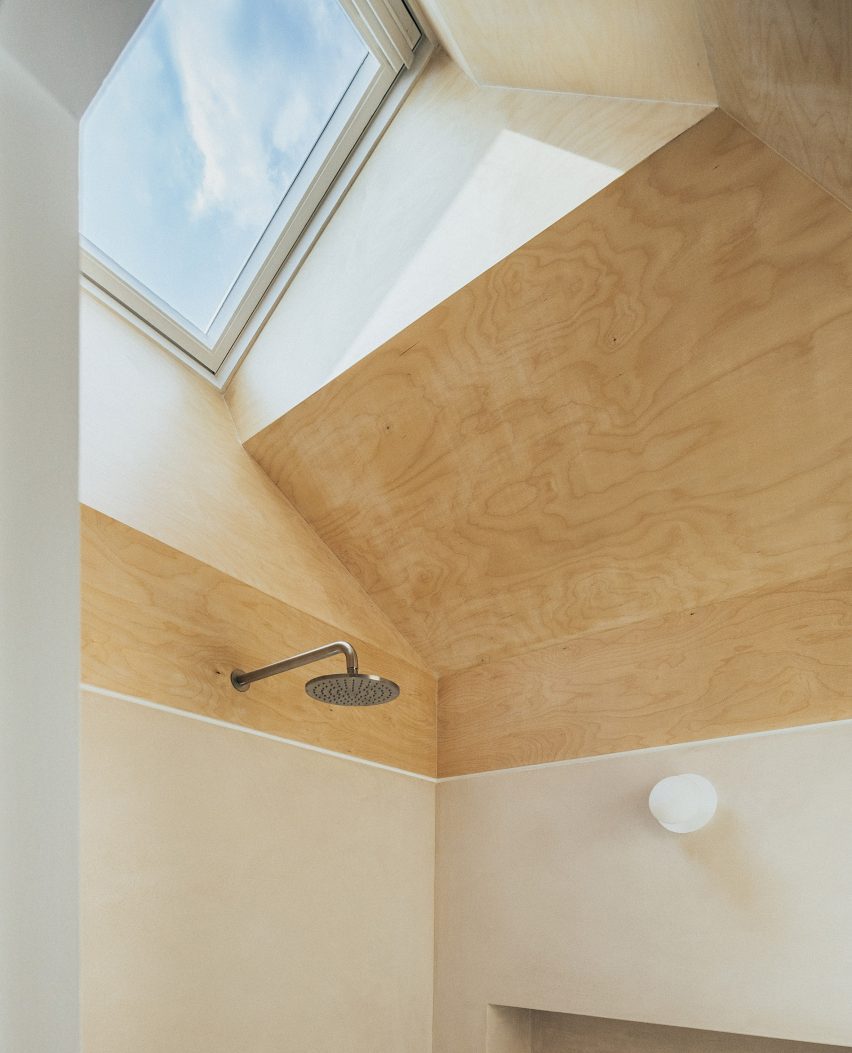
“We created a splayed ceiling that increased the height of the space, allowing for the playful integration of materials to emphasise the new angles,” the studio said.
“Naturally finished birch ply, leading from the skylight down into Tadelakt walls, beautifully captures sunlight creating a special warmth in the space.”
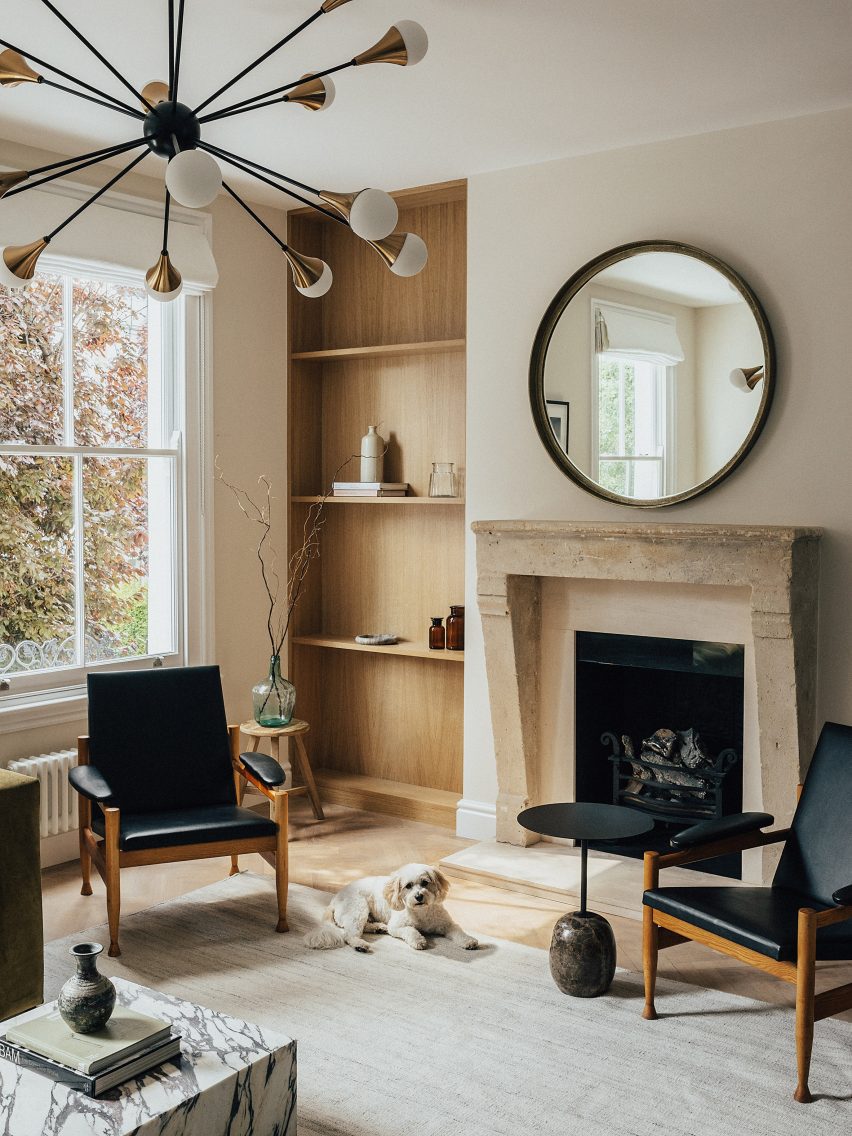
White oak can be found throughout the house in the form of built-in joinery from bookcases and wardrobes, as well as in the feature beams of the extension.
“We wanted to simplify the material palette and keep it light, both in appearance and number of elements we used,” the studio said.
“This was done to emphasise the quality of the materials themselves, highlight the craftsmanship of the work and establish a visual link between the interior spaces throughout the home.”
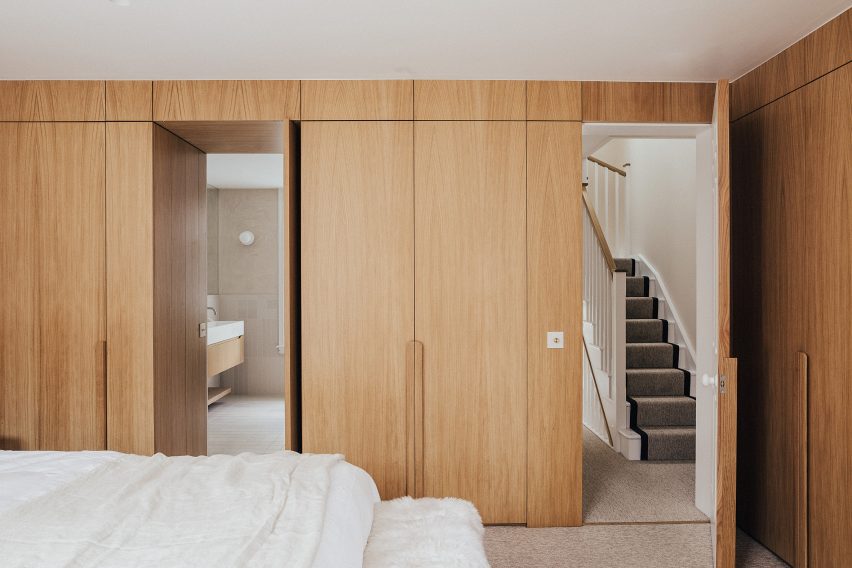
Polished concrete, used for the floor at ground level, is underlaid with underfloor heating and provides a durable surface that is easy to clean for the owners after walking their dog.
Other recently renovated houses in London include Sunderland Road House by 2LG, which features pastel-painted corniced ceilings, and Graphic House by Office S&M, which is defined by graphic shapes and bold hues.
The photography is by Taran Wilkhu.

